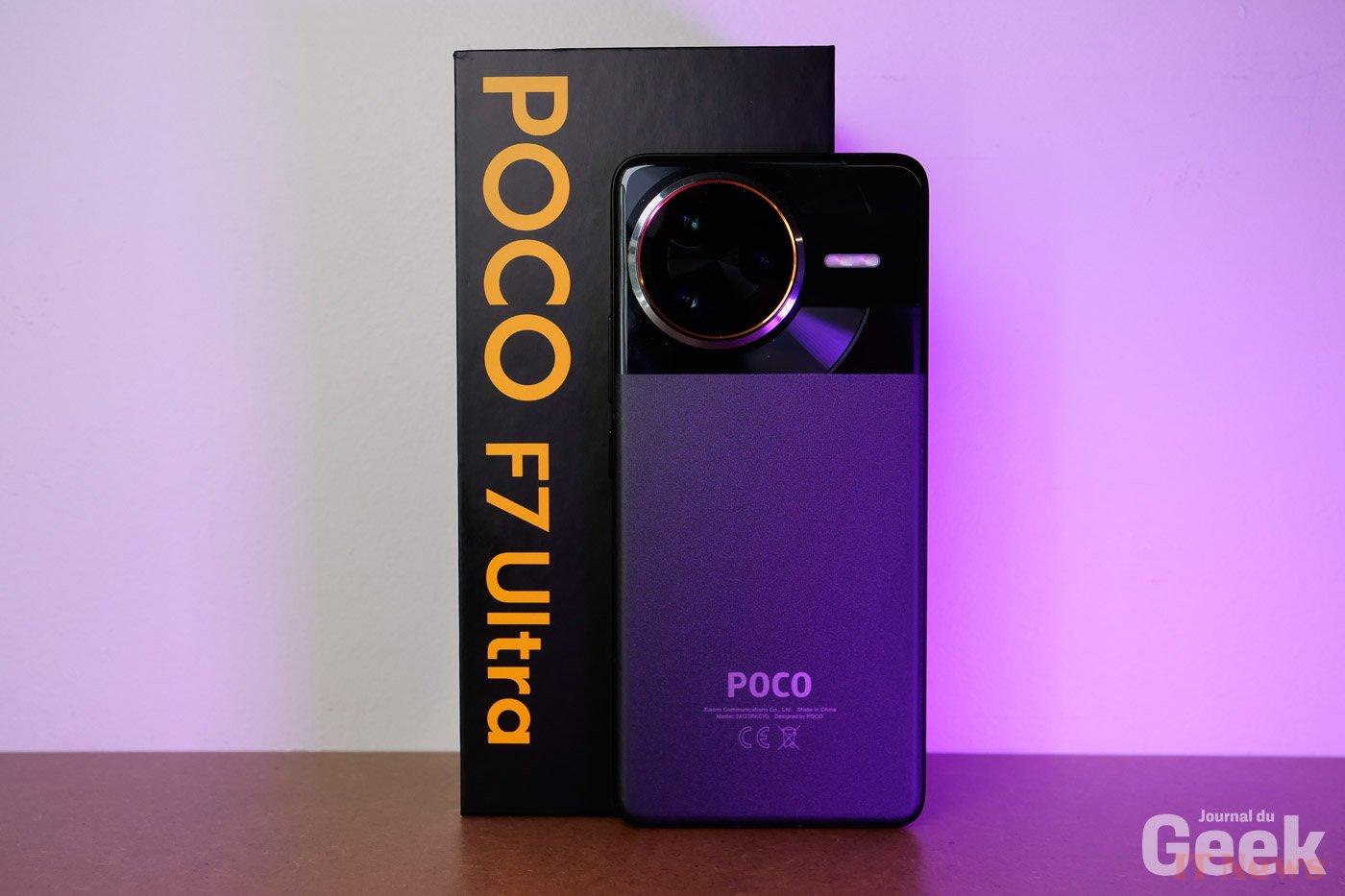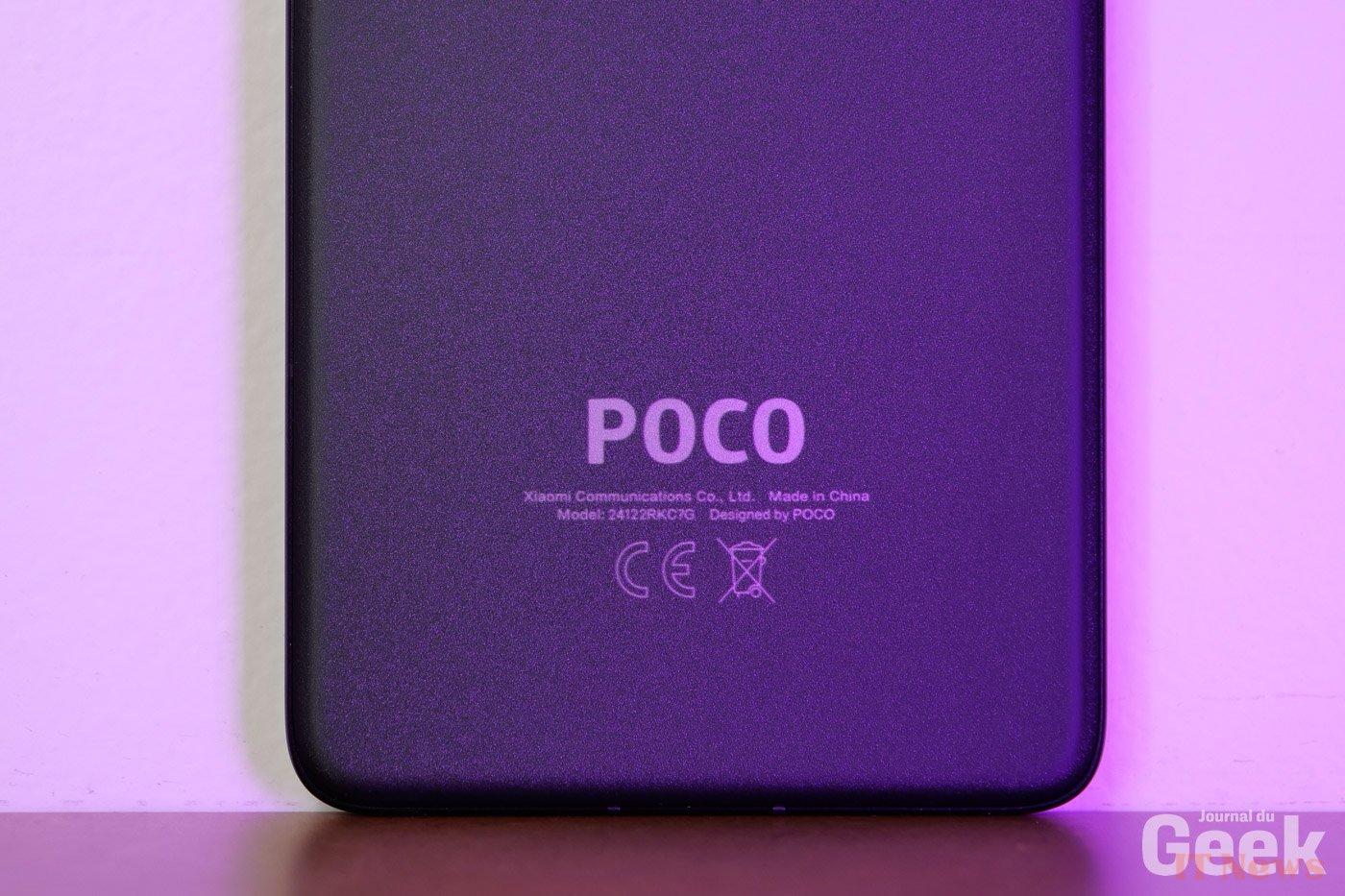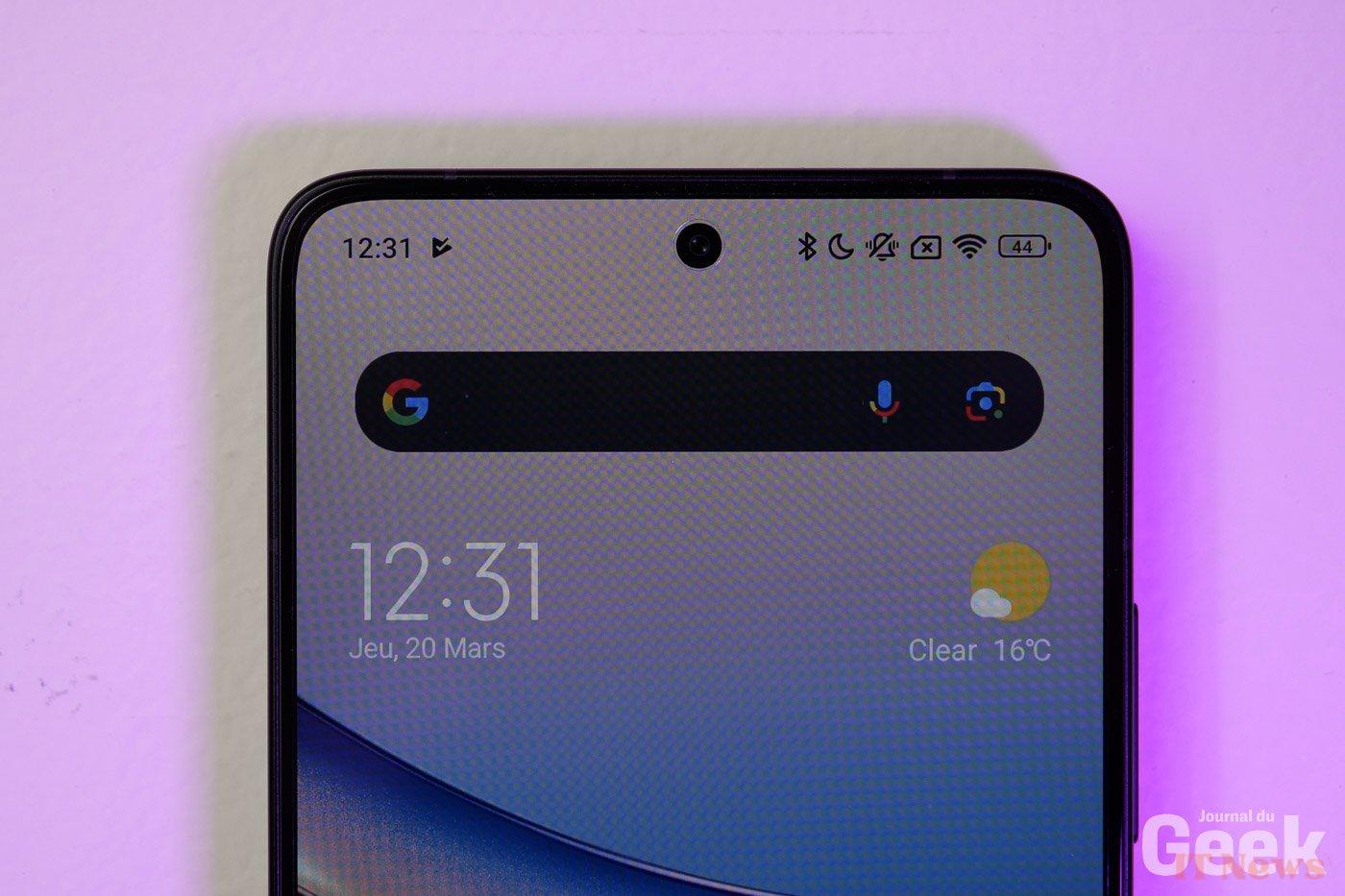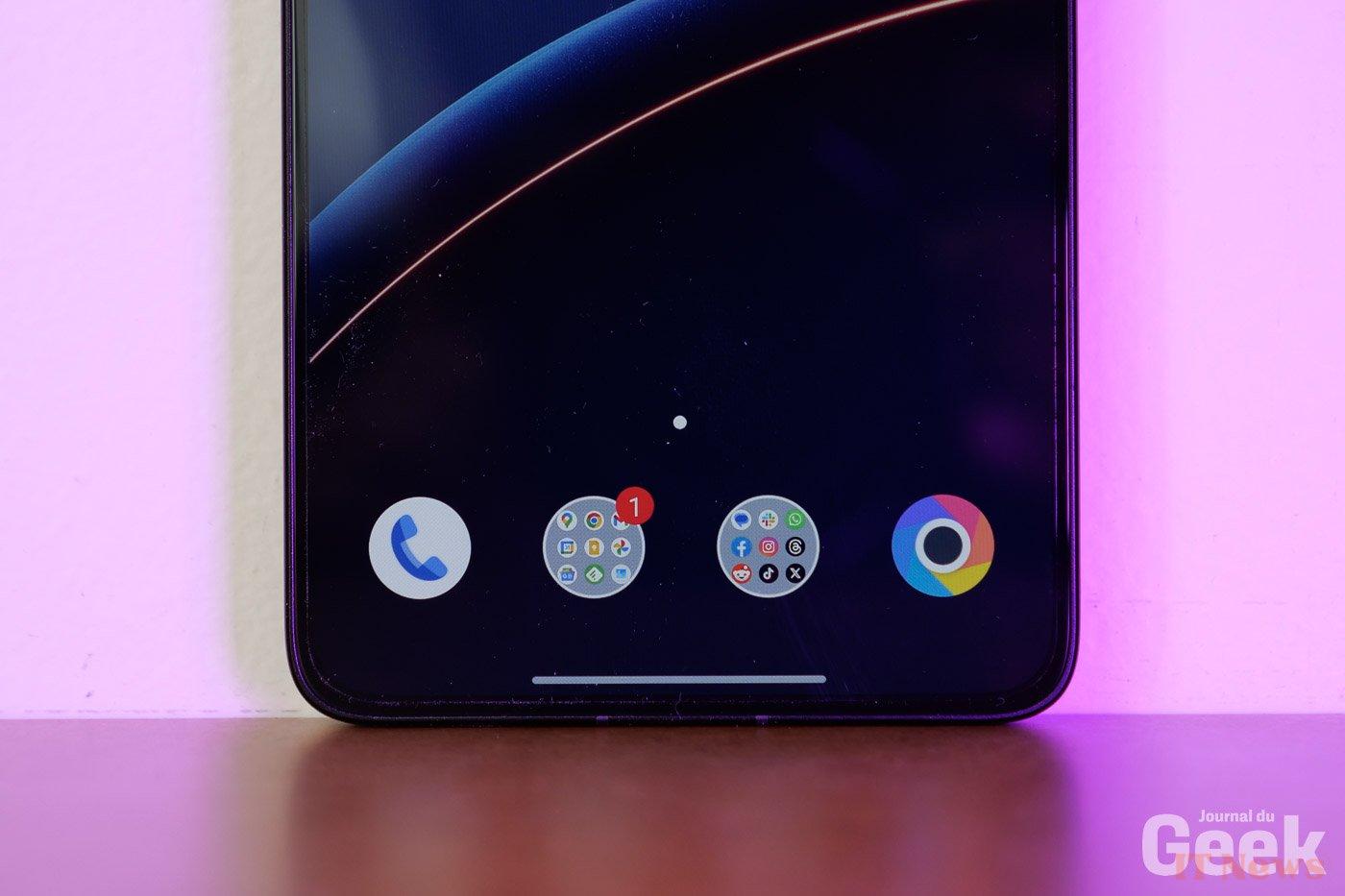While Xiaomi continues to play the party pooper in the premium smartphone segment with a recent very successful Xiaomi 15 Ultra (see our test HERE), Poco is playing in another segment and is therefore taking advantage of this start of spring to announce no less than two new smartphones with the new F7 Series. Here are the new Poco F7 Pro and F7 Ultra (for more details, click HERE). Of course, today we are interested in the Poco F7 Ultra which, when it was announced, caused a bit of a stir in the industry. Indeed, with a price that starts from 700 euros, or even less with the launch offers, the Poco F7 Ultra is reminiscent of the time when Xiaomi, or even OnePlus, launched with the aim of offering the best possible but at a lower price.
Also, the new Poco F7 Ultra ticks all the boxes, from performance to battery life, including the screen and, above all, by offering a very versatile and ultimately quite impressive camera unit. We spent no less than two weeks with the new kid on the block and yes, we were seduced and we are not far from saying that it is undoubtedly the best value for money in the high-end smartphone segment to date. The choice of the term “Ultra” is not chosen at random and Poco is playing it provocative in order to ensure comparison with competing smartphones that are also “Ultra”. Here is our review of the new Poco F7 Ultra.
The Features of the Poco F7 Ultra
As a reminder of the features, the new Poco F7 Ultra offers you:
| POCO F7 Ultra | |
|---|---|
| Screen | - 6.67" AMOLED DotDisplay screen - 2K definition (1,440x 3200 pixels) - Density: 526ppp - POCO Shield Glass - Refresh rate: 120Hz - Brightness Max: 1800 nits (HBM brightness), 3200 nits (HBM brightness) maximum) - Touch sampling rate: 480 Hz - 20:9 format - HDR Pro - HDR 10+ - Dolby Vision - DCI-P3 |
| SoC and GPU | - Qualcomm Snapdragon 8 Elite - Octo-core, 4 nm - Adreno GPU - LiquidCool Technology 4.0 - Visionboost D7 |
| Memory | - 12GB or 16GB of LPDDR5X RAM - 256GB or 512GB of storage UFS 4.1 - No MicroSD memory port |
| Color | - Yellow - Black - Metal and glass back - Metal frame - IP68 |
| Camera | - Triple camera on the back: - Main camera: 50 megapixel Light Fusion, f/1.6, OIS - Telephoto: 50 megapixel, 2.5x optical zoom, 60mm, f/2, OIS - Ultra wide-angle camera: 32 megapixel, 120°, f/2.2 - 8K video recording at 24 fps, 4K at 24, 30 or 60 fps, 1080p at 30 or 60 fps - Slow motion mode in 1080p at 960 fps - Wide-angle front camera - 32 megapixel sensor - Front video recording in 1080p at 30 fps or 60 fps |
| Audio | - Stereo speakers - Dolby Atmos - High resolution, Hi-Res Wireless Audio certification |
| Battery | - 5300 mAh battery - HyperCharge 120 W - HyperCharge Wireless 50 W |
| Connectivities | - Ultrasonic fingerprint sensor - Bluetooth 6.0 - WiFi 7 - 5G - Dual nano-SIM - GPS, BDS, GALILEO, QZSS, NavIC, GLONASS - Proximity sensor - 360° ambient light sensor - Accelerometer - Electronic compass - Gyroscope - Infrared emitter - Flicker sensor |
| Software | - Android 15 - HyperOS 2 - 4 years of Android OS updates + 6 years of security updates |
| Size and Weight | - 160.26 × 74.95 × 8.39 mm - 212 grams |
| Introductory price | - 699.90 Euros (12 GB + 256 GB) - 749.90 Euros (16 GB + 512 GB) |
| Availability Date | - March 27, 2025 |
For the packaging itself, it's classic and without surprise, we find a gray box with the smartphone inside of course, a USB cable and instructions for a first use. Nothing very original except that with the Asian manufacturer, the charger is still included. In the surprise genre, if we find WiFi 7, we were surprised to see Bluetooth in version 6.0. We don't yet know what this actually changes on a daily basis, but it's always good to have the latest version.
For its official price, count on 699.90 euros + 70 euros trade-in bonus for the 12GB RAM + 256GB internal memory version. Count on 749.90 euros + 70 euros trade-in bonus for the 16GB RAM + 512GB internal memory version. And that's not all, as Xiaomi/Poco is offering a free gift of your choice: a Redmi Watch 5 Lite or Redmi Buds 6. But it's not over yet, as Poco is also offering an 80W wireless charger for 49.99 euros instead of 199.90 euros, or a Bluetooth speaker for 39.99 euros instead of 79.99 euros (provided you buy everything at the same time).
Design, Screen and Audio
Let's be honest, when we talk about Poco, we expect a design that often pleases Asian countries but less so European users. For the latter, we say that it's probably the price to pay for a more affordable price. Well, this year, Poco arrives with a much more discreet design, especially for the black version that we tested. Indeed, the yellow version remains yellow, which can put off more than one, but it's the brand's trademark. And if we put the color aside, Poco offers a rather sober design with a certain finesse and, above all, a double rendering on the back. The back thus offers one part in aluminum and the other in glass, which allows to delimit the photo block without offering a rectangular photo block. Moreover, speaking of the latter, it is round with an off-center flash on the back. Everything remains discreet, even more so on the black version.
On the front, we obviously find the screen with its punch-hole in the center for the front camera. The fingerprint sensor is ultrasonic and is therefore located under the screen. Yes, we are talking about the same technology as what Samsung offers, so it is faster to unlock the smartphone and in the middle of the night, the smartphone will not light up the entire room. Besides, we did not notice any placement problems, unlike some of its competitors like Oppo or OnePlus. Otherwise, we find an XL screen with a diagonal of 6.67 inches and despite the size, we did not notice any handling problems. Some will find this screen too big but to be honest, this diagonal remains pleasant for everyday use. We will also note relatively thin screen edges on all 4 sides. It is an AMOLED panel with a 2K definition. And because we are in 2025, we also find a refresh rate of 120Hz. It is variable but in steps (60Hz, 90Hz and 120Hz). In everyday life, we won't necessarily see a difference with a screen that is LPTO.
On the sound side, we now find two speakers and obviously, it's always better than just one. We remind you that just a few years ago, it was on this kind of detail that manufacturers made their savings. In any case, in this price range, it would have been a professional mistake not to offer two speakers. And unsurprisingly, there is no 3.5mm jack port. Otherwise, in practice and on a daily basis, there is not much to say, it lacks power but it does not saturate. If it is sufficient for short content, we can only advise you to use an external speaker or headphones.
Xiaomi HyperOS 2.0, Performance and Battery Life
On the Android side, no surprises in itself, we are in the presence of a Poco smartphone and therefore Xiaomi in some way. So, it is without surprise that we obviously find Android 15 with the HyperOS 2.0 overlay. We thus find alerts that are always a little too long, too many third-party applications, a few ads or even dialog boxes that are a little too untimely for our taste. Now, once the cleaning is done and after all the small configurations of the beginning, we find a user experience very close to Android Stock, which is not to displease us. So we know that some prefer a presentation like iOS, with all the applications displayed, but this is not our case. Afterwards, we always have the choice, and it is not bad. In any case, the overall experience was fluid and pleasant. Obviously, it is 2025 and we can no longer do without AI. It's no surprise that we find essentially the functions offered by Google and therefore Gemini.
In terms of performance, and again without surprises, this is a high-end smartphone and Poco hits hard. For the price, we find the Qualcomm Snapdragon 8 Elite that we are starting to know well since all high-end and premium smartphones use it at the moment. It is undoubtedly the best SoC for Android smartphones to date, even if according to our benchmarks, Poco's version seems to be slightly slower. In any case, and this has been the case for several years, the power of these SoCs exceeds our needs, so outside of benchmarks, it won't necessarily change our daily lives. Obviously, we tried all the recent games like Wild Rifts, Dead Cells, Call of Duty Warzone Mobile, Diablo Immortals, and Genshin Impact. There's not much to say, it was just super smooth, even at 120Hz for compatible games. We'll note an integrated D7 chipset that allows for extrapolating images in games to easily ensure 120 frames per second. While the technology is interesting, we'll wait before making a decision because it requires specific developments and it only concerns Genshin Impact for now. We'll also note some overheating when the smartphone is under heavy load; this is the price to pay for a partially aluminum back.
The Poco F7 Ultra finally offers a 5300mAh battery, which is normal for this category of smartphone. In fact, it's quite good, and that's what you need with such a screen and such a SoC. In our typical daily uses, we easily lasted a full day. And because it's a high-end smartphone, we expected to be able to get even two days of battery life, which we got without too much effort. Standby is somewhat more aggressive than on Xiaomi smartphones. Afterwards, the most important thing is the full day without having to make any effort and that's what we got. We don't forget the fast wired charging which allows you to recharge in a little over half an hour and barely an hour wirelessly.
Photo and Video
If we had doubts about the photo on a Poco smartphone? It must be said that Poco has made a huge effort this year, and even more so with the Poco F7 Ultra, which arrives with a very versatile rear camera unit. While we obviously find the standard wide-angle and ultra-wide-angle lenses, we also find a telephoto lens with a 2.5x optical zoom. For the main camera sensor, we find a 50-megapixel Light Fusion 800 sensor that equipped some of Xiaomi's high-end and premium smartphones last year. And this is a guarantee of quality. And once again, we can explain and procrastinate at length, in breadth or across, what interests us most remains the final result.
And this is perhaps where Poco has some good news. Indeed, in ideal lighting conditions, the Poco F7 Ultra offers contrasting and sharp photos. Colors and exposure are well respected overall. So be careful with what is displayed on the screen, which sometimes shows an excess of contrast. To our surprise, the three cameras were quite consistent in terms of both exposure and white balance. Even the ultra-wide angle came out with honors. In low light conditions, we are also pleasantly surprised by the photos taken with Poco's new high-end smartphone; they are at the level of a high-end smartphone. It is still a little smoothed at times, but everything maintains a certain level of detail, and above all, we were satisfied with what we saw.
More than words, here are examples taken with the Poco F7 Ultra:
On the video side, if the stabilization leaves something to be desired, the Poco F7 Ultra does quite well with a good level of detail, whether in good lighting conditions or in less good ones. Of course, we strongly recommend that users use the main camera primarily, especially when lighting conditions are less than ideal. Finally, note that the front camera only allows you to take videos in Full HD. It's a shame that there isn't a minimum of 4K.








0 Comments